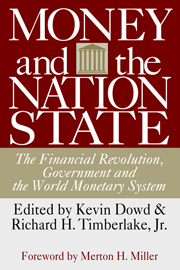Even among the crypto faithful, confidence in stablecoins has been shaken, and calls for regulation have intensified. Sen. Pat Toomey (R., Pa.) has proposed legislation, but the real question is why the government continues to sidestep existing laws and protections to coddle a stagnant, wasteful technology in search of a compelling legal-use case.
A stablecoin is the crypto-world’s preferred medium of exchange: a token pegged to a fiat currency like the U.S. dollar. Maintaining the advertised fixed exchange rate, however, has been difficult for stablecoin issuers. The failure of TerraUSD this month was followed by Tether “breaking the buck.”
The crypto industry claims that only the lightest of regulations will allow its blockchain technology and the “on-chain” products built on top of it to thrive, echoing a familiar tech-industry refrain.
There are three varieties of stablecoins: algorithmic, crypto-backed, and fiat-backed. TerraUSD is now the most famous example of an algorithmic stablecoin whose values are meant to be stabilized by changing the relative supply of the stablecoin and a counterpart cryptocurrency. Non-algorithmic stablecoins back their liabilities with cryptocurrency or fiat currency. Because of the volatility of cryptocurrency values, crypto-backed stablecoins are usually highly over-collateralized. Because algorithmic and crypto-backed stablecoins are obviously exposed to a meltdown in cryptocurrency prices, neither is a serious candidate for a run-proof stablecoin design.
Investor confidence in fiat-backed stablecoins depends largely on the issuer’s “off-chain” operations. Those are the issuer’s transactions in assets, such as bank deposits and Treasury bills, which support the value of its stablecoin. There are three models stablecoin issuers could follow to make their products less unstable.
The first is a currency board. (The U.S doesn’t use one, but 14 other countries and territories do.) A currency board issues and redeems a state’s domestic currency for foreign currency at a fixed exchange rate. To ensure that currency board liabilities maintain their fixed exchange rate, currency boards are typically required to hold high-quality foreign reserve assets equal to between 100 and 110% of their liabilities.
Second, a chartered bank can create deposit liabilities by making loans. Deposits may be redeemed at any time for dollars. The fixed exchange rate between deposit money and dollars is supported by backstops including prudent lending, risk management, bank capital, deposit insurance for members of the FDIC, and reviews of management’s competence.
Third, a qualified investment manager can operate a money market mutual fund. Such funds are allowed to fix their net asset value against the dollar only when the fund holds a portfolio of liquid government securities; otherwise, the net asset value must float.
These well-tested models suggest that defending a fixed exchange rate requires a competent, qualified issuer who backs the liability one-for-one with safe assets. Such seem to be the minimum requirements for a well-regulated stablecoin.
Sen. Toomey’s Stablecoin Transparency of Reserves and Uniform Safe Transactions Act specifically exempts stablecoin issuers from securities and investment management laws. Rather than requiring stablecoin issuers to qualify as chartered banks or investment managers, the TRUST Act lets the Office of the Comptroller of the Currency decide what qualifications are necessary.
While the draft law requires full coverage of stablecoin liabilities with high-quality government assets, it goes easy on verification. Quarterly tests of reserve coverage are limited to attestations that, unlike audits, neither substantiate the data presented nor seek to identify gaps in systems or controls.
Stablecoins inherently entail another serious risk. They are engineered to move irrevocably among buyers and sellers within minutes. But deals in the reserve assets that back stablecoins require a day or longer to settle. Deals sometimes fail to settle because of computer glitches, communications breakdowns or other reasons.
Imagine a sequence of stablecoin transactions across many tokens. The equivalent of $100 million flows “on-chain,” accompanied by an “off-chain” flow of collateral. The collateral flow lags behind the token-based transactions. If you are a stablecoin issuer in the middle of this sequence, would you transmit tokens and incur a $100 million liability before you know whether the collateral has arrived? Suppose an upstream stablecoin issuer is unwilling or unable to send collateral. This is essentially what happened on June 26, 1974, when Bankhaus Herstatt, a private German bank, failed in between receiving Deutsche marks and paying out dollars to its foreign-exchange counterparties. Herstatt’s counterparties never received those dollars.
The “Herstatt risk” can be eliminated by synchronizing on- and off-chain transactions. But then the stablecoin loses its speed advantage. One might as well transact in regulated bank deposits or money market mutual fund balances, eliminating the “stablecoin” fiction altogether.
Sen. Toomey’s proposal can’t build the confidence needed to prevent further runs on stablecoins. It would be simpler to admit that stablecoins aren’t stable, cryptocurrencies aren’t stores of value, and a parallel, crypto-legal financial system isn’t essential for advancing finance.











